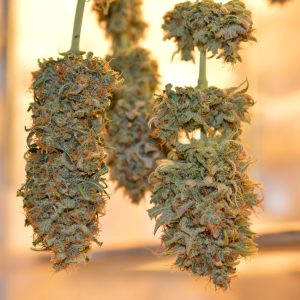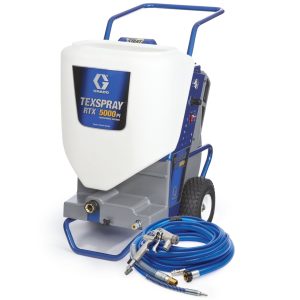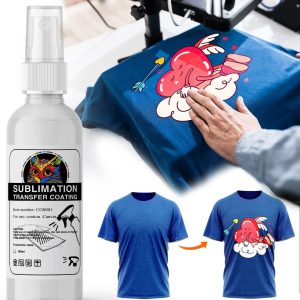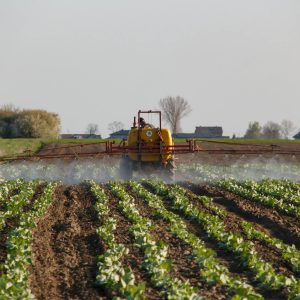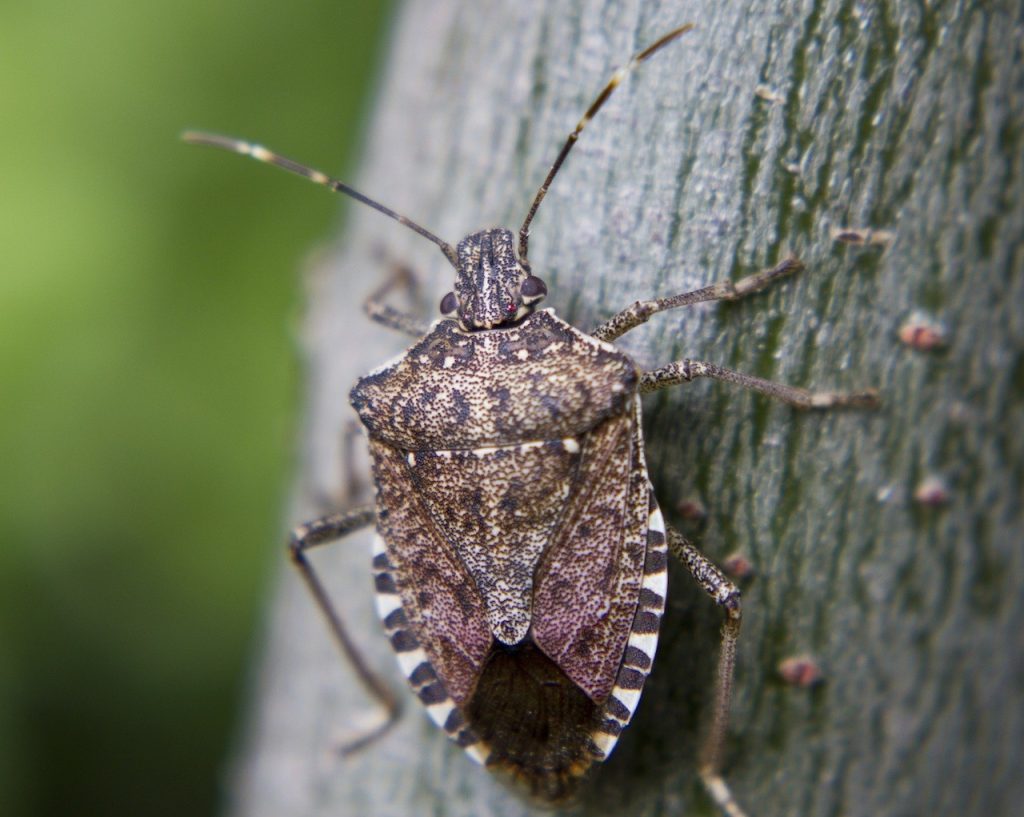
Stink bugs have become one of the most persistent and frustrating pests homeowners face, especially during fall months when they seek warm shelter for winter. These shield-shaped insects not only emit a foul odor when disturbed but can also cause significant damage to crops and become a major nuisance indoors. Finding the right stink bug spray is crucial for effective pest management, whether you’re dealing with a minor invasion or a full-scale infestation.
The brown marmorated stink bug (BMSB), in particular, has spread rapidly across North America since its introduction from Asia in the 1990s. These invasive pests have few natural predators and reproduce quickly, making professional-grade stink bug control methods essential for long-term management. Understanding which sprays work best, when to apply them, and how to prevent future infestations can save homeowners hundreds of dollars in professional pest control services while protecting their property from ongoing damage.
Understanding Stink Bug Behavior and Why Traditional Methods Fail
The Science Behind Stink Bug Infestations
Stink bugs are notorious for their seasonal migration patterns, which directly impact the effectiveness of various control methods. During warmer months, these pests feed on fruits, vegetables, and ornamental plants, causing extensive agricultural damage worth millions of dollars annually. However, as temperatures drop in fall, stink bugs begin seeking overwintering sites, often choosing human structures like homes, sheds, and garages.
Research conducted by entomologists at Virginia Tech reveals that a single female stink bug can lay between 20-30 eggs at a time, with multiple generations possible in warmer climates. This rapid reproduction cycle means that early intervention with appropriate stink bug sprays is critical for preventing population explosions. The insects communicate through pheromones, which can attract hundreds or even thousands of additional stink bugs to the same location.
Why Standard Insecticides Often Fail
Many homeowners make the mistake of using general household insecticides against stink bugs, only to find limited success. Standard ant and roach sprays typically contain pyrethroids, which may kill stink bugs on contact but provide little residual protection. Stink bugs have developed resistance to many common insecticides, and their hard exoskeleton can protect them from lower-concentration sprays.
Professional pest control experts emphasize that effective stink bug spray solutions must contain specific active ingredients that target the insect’s nervous system or disrupt their ability to feed and reproduce. Additionally, the timing and method of application play crucial roles in success rates, with many homeowners applying treatments at the wrong time of year or in incorrect locations.
Types of Stink Bug Sprays: Chemical vs. Natural Solutions
Professional-Grade Chemical Stink Bug Sprays
Pyrethroid-based sprays remain the most effective chemical option for stink bug control. Products containing bifenthrin, cyfluthrin, or lambda-cyhalothrin provide excellent knockdown power and residual activity. These ingredients work by disrupting the insect’s sodium channels, causing paralysis and death within hours of contact.
Popular professional-grade options include:
- Talstar Pro (Bifenthrin 7.9%): Provides up to 3 months of residual control
- Tempo SC Ultra (Beta-Cyfluthrin 11.8%): Fast-acting with excellent outdoor stability
- Demand CS (Lambda-Cyhalothrin 9.7%): Encapsulated formula for extended release
- Suspend SC (Deltamethrin 4.75%): Long-lasting residual with low odor
These concentrated stink bug sprays typically require dilution with water and can treat large areas cost-effectively. A single quart of concentrate can often treat the entire perimeter of an average home multiple times, making them economical for serious infestations.
Natural and Organic Stink Bug Spray Alternatives
Homeowners concerned about chemical exposure or environmental impact have several natural options that can provide moderate control when used correctly. Essential oil-based stink bug sprays containing peppermint, rosemary, or thyme oils create barriers that repel rather than kill insects. While less potent than synthetic chemicals, these solutions offer safer alternatives for families with children or pets.
Neem oil spray has gained popularity as a natural stink bug deterrent. Derived from the neem tree, this botanical insecticide disrupts insect growth and feeding behavior. Studies show that neem oil applications can reduce stink bug feeding damage by up to 60% when applied regularly throughout the growing season.
Soap-based sprays represent another eco-friendly option. Simple mixtures of liquid dish soap and water can suffocate stink bugs on contact by coating their breathing pores. While not providing residual control, soap sprays offer immediate knockdown for visible insects and cost pennies per application.
| Spray Type | Active Ingredient | Effectiveness | Duration | Safety Level |
|---|---|---|---|---|
| Pyrethroid | Bifenthrin | Excellent | 2-3 months | Moderate |
| Neonicotinoid | Imidacloprid | Very Good | 4-6 weeks | Moderate |
| Essential Oil | Peppermint/Thyme | Fair | 1-2 weeks | High |
| Soap-based | Potassium Salts | Good (contact) | Immediate only | Very High |
| Neem Oil | Azadirachtin | Good | 2-3 weeks | High |
Best Stink Bug Spray Products: Detailed Reviews and Comparisons
Top-Rated Chemical Stink Bug Sprays
Ortho Home Defense Insect Killer stands out as one of the most accessible and effective ready-to-use stink bug sprays available to consumers. This bifenthrin-based formula provides up to 12 months of indoor protection and 3 months outdoors. The continuous spray trigger allows for easy application along baseboards, window frames, and door thresholds where stink bugs commonly enter homes.
Independent testing by university extension offices shows that Ortho Home Defense achieves 95% knockdown rates within 24 hours when applied correctly. The formula’s low odor and quick-drying properties make it suitable for indoor use, though proper ventilation remains important during application.
Spectracide Triazicide Insect Killer offers broader spectrum control, targeting not only stink bugs but also other common household pests. Its gamma-cyhalothrin active ingredient provides excellent residual activity on both porous and non-porous surfaces. This outdoor stink bug spray works particularly well for treating exterior walls, eaves, and other areas where insects congregate before entering structures.
Premium Concentrate Options for Large-Scale Treatment
Professional pest control operators frequently rely on Suspend SC for challenging stink bug infestations. This deltamethrin-based concentrate offers exceptional flexibility, allowing applicators to adjust concentrations based on infestation severity. The product’s capsule suspension technology ensures active ingredients remain protected from UV degradation and alkaline surfaces, extending residual effectiveness.
Case studies from agricultural extension services demonstrate that properly applied Suspend SC can reduce stink bug populations by 85-90% within two weeks of treatment. The concentrate format proves economical for treating large properties, with a single bottle capable of creating up to 40 gallons of finished spray solution.
Talstar Professional represents the gold standard for long-lasting stink bug spray applications. Its 7.9% bifenthrin concentration provides unmatched residual control, with some treatments remaining effective for up to 90 days outdoors. The product’s versatility allows for both broadcast applications and targeted crack-and-crevice treatments.
Natural Stink Bug Spray Champions
EcoSMART Organic Insect Killer leads the natural category with its proprietary blend of plant oils including rosemary, peppermint, and thyme. While requiring more frequent applications than synthetic alternatives, this organic stink bug spray provides effective knockdown without synthetic chemicals. The product carries OMRI (Organic Materials Review Institute) certification, making it suitable for organic gardening applications.
Field trials conducted by organic farming associations show that EcoSMART applications every 7-10 days can maintain stink bug populations below economically damaging thresholds in most situations. The spray’s pleasant scent and rapid biodegradation make it ideal for indoor use around sensitive areas.
Garden Safe Neem Oil Extract offers systemic protection through its azadirachtin content. Unlike contact killers, neem oil affects insect growth and reproduction, providing longer-term population suppression. Research indicates that regular neem applications can reduce stink bug egg viability by up to 75%, breaking the reproductive cycle.
Application Techniques: Maximizing Stink Bug Spray Effectiveness
Timing Your Stink Bug Spray Applications
The success of any stink bug control spray depends heavily on proper timing. Late summer applications (August-September) prove most critical, as this coincides with adult stink bugs seeking overwintering sites. Spraying too early in the season may miss peak migration periods, while late applications may find insects already established in protected locations.
Entomologists recommend beginning exterior perimeter treatments in mid-August, followed by monthly maintenance applications through October. This schedule intercepts migrating stink bugs before they locate entry points and establish overwintering aggregations. Early intervention stink bug sprays applied during this window can prevent the need for more intensive treatments later.
Weather conditions significantly impact spray effectiveness. Applications should avoid periods of rain or high humidity, which can reduce residual activity and wash away active ingredients. Morning applications allow sprays to dry before evening dew, while avoiding peak temperatures that may cause rapid evaporation of carrier solvents.
Strategic Application Zones for Maximum Impact
Exterior perimeter treatment forms the foundation of effective stink bug management. Focus applications on areas where insects naturally congregate, including:
- South and west-facing walls that receive maximum sun exposure
- Eaves and overhangs that provide shelter from weather
- Window and door frames where insects seek entry points
- Utility penetrations including pipes, wires, and vents
- Vegetation contact points where plants touch structures
Research by urban entomologists shows that treating a 6-foot band around structures captures 90% of migrating stink bugs before they reach potential entry points. This barrier spray method proves more effective and economical than spot treatments or interior applications.
Interior applications should target known entry routes and hiding places. Indoor stink bug spray treatments work best when applied to baseboards, window sills, door thresholds, and areas around heating vents. Pay special attention to attics, crawl spaces, and wall voids where insects may overwinter in large numbers.
Professional Application Equipment and Techniques
Achieving consistent coverage requires appropriate application equipment. Pump sprayers with adjustable nozzles provide the most versatility for homeowner applications. Tank sprayers holding 1-2 gallons allow treatment of average properties without frequent refilling, while maintaining consistent pressure for even distribution.
Hose-end sprayers work well for large-scale perimeter treatments but may provide less precise control over application rates. These systems automatically dilute concentrates to proper ratios, reducing mixing errors that can compromise effectiveness or safety.
Professional applicators often use power sprayers capable of reaching second-story areas and providing consistent pressure throughout treatment. While not necessary for most homeowner situations, these tools become valuable for large properties or severe infestations requiring extensive coverage.
Safety Considerations and Environmental Impact
Understanding Chemical Stink Bug Spray Risks
Pyrethroid-based stink bug insecticides generally present low risk to humans and pets when used according to label directions. However, proper safety precautions remain essential. These synthetic chemicals can cause skin and eye irritation upon contact, and inhalation may trigger respiratory symptoms in sensitive individuals.
Long-term exposure studies indicate that pyrethroids break down relatively quickly in the environment, typically within 30-60 days depending on conditions. This rapid degradation reduces accumulation risks but necessitates reapplication for sustained control. The chemicals show low toxicity to birds and mammals but can harm beneficial insects including bees and predatory species.
Aquatic toxicity represents the primary environmental concern with pyrethroid sprays. These chemicals prove highly toxic to fish and aquatic invertebrates, requiring careful application around water features, storm drains, and sensitive habitats. Buffer zones of 25-50 feet from water bodies help prevent contamination through drift or runoff.
Safe Handling and Storage Practices
Proper stink bug spray safety begins with reading and following all label instructions. Wear protective clothing including long sleeves, pants, gloves, and eye protection during application. Remove contaminated clothing immediately after use and wash separately from family laundry.
Store concentrates and ready-to-use products in original containers within locked cabinets away from children and pets. Extreme temperatures can degrade active ingredients or cause container failure, so maintain storage areas between 32-85°F when possible. Never store diluted solutions for extended periods, as degradation and contamination can reduce effectiveness.
Disposal of empty containers requires following local regulations. Many areas offer pesticide collection programs for safe disposal. Triple-rinse empty concentrate containers and use rinse water as part of future applications to minimize waste and environmental impact.
Protecting Non-Target Species
Beneficial insect protection should guide application timing and methods. Avoid spraying during peak pollinator activity periods (typically 10 AM – 4 PM) and target applications away from flowering plants when possible. Evening applications allow beneficial insects to avoid treated areas while maintaining effectiveness against stink bugs.
Integrated Pest Management (IPM) principles recommend combining chemical controls with cultural and biological methods. This approach reduces overall pesticide use while maintaining effective stink bug suppression. Selective stink bug sprays that target specific pest behaviors or life stages can minimize impacts on beneficial species.
DIY Stink Bug Spray Recipes and Homemade Solutions
Essential Oil-Based Stink Bug Repellent Sprays
Creating effective homemade stink bug spray requires understanding which essential oils provide the strongest repellent properties. Peppermint oil contains menthol compounds that interfere with insect sensory receptors, making treated areas unattractive to stink bugs. Research shows that 2% peppermint oil solutions can reduce stink bug settling by up to 80% on treated surfaces.
Basic Peppermint Stink Bug Spray Recipe:
- 2 cups warm water
- 2 tablespoons liquid dish soap
- 10-15 drops peppermint essential oil
- 1 tablespoon white vinegar (optional, enhances adherence)
Mix ingredients thoroughly and apply using a spray bottle. Reapply every 3-5 days or after rain for maintained effectiveness. This gentle formula works safely around children and pets while providing moderate stink bug deterrence.
Enhanced Multi-Oil Repellent Blend:
- 2 cups water
- 1 tablespoon liquid castile soap
- 8 drops peppermint oil
- 6 drops rosemary oil
- 4 drops thyme oil
- 2 drops clove oil
The combination of multiple essential oils creates a broader spectrum of repellent compounds. University studies indicate that multi-oil blends maintain effectiveness longer than single-oil solutions, though still requiring more frequent application than synthetic alternatives.
Soap and Oil Combination Treatments
Insecticidal soap sprays work by suffocating insects through surface tension disruption. Commercial formulations prove most reliable, but effective homemade versions can be created using specific soap types. Liquid castile soap or pure dish soap without additives provides the best results.
Concentrated Soap Spray Formula:
- 1 quart water
- 2 tablespoons liquid soap
- 1 tablespoon vegetable oil
- 1 teaspoon baking soda (improves mixing)
This contact-kill stink bug spray requires direct application to insects for effectiveness. The oil component helps the solution adhere to insect bodies while the soap disrupts their protective waxy coating. Applications every 2-3 days during peak activity periods can significantly reduce local populations.
Neem Oil-Based Systemic Solutions
Pure neem oil offers both contact and systemic activity against stink bugs. Cold-pressed neem oil contains higher concentrations of azadirachtin, the primary active compound responsible for insect growth regulation. Commercial neem oil products provide consistent potency, but pure oil can be diluted for custom applications.
Neem Oil Spray Concentrate:
- 1 gallon water
- 2 tablespoons pure neem oil
- 1 tablespoon liquid soap (emulsifier)
- 1 teaspoon baking soda
Neem oil requires an emulsifier to mix properly with water. The soap component serves this function while providing additional insecticidal properties. This natural systemic stink bug spray affects insect feeding and reproduction for 2-3 weeks per application.
Seasonal Stink Bug Spray Strategies
Spring Prevention and Early Detection
Spring applications of preventive stink bug spray can interrupt emerging populations before they establish feeding sites and begin reproduction. As overwintering adults become active in April and May, targeted treatments around known hibernation sites can eliminate insects before they disperse to agricultural areas or begin laying eggs.
Early season spray timing proves critical for long-term success. University extension research demonstrates that eliminating 75% of overwintering adults can reduce summer populations by up to 90%. This multiplicative effect makes spring treatments among the most cost-effective pest management investments homeowners can make.
Focus spring applications on areas where stink bugs commonly overwinter, including:
- Attic spaces and wall voids
- Woodpiles and outdoor storage areas
- Dense vegetation near structures
- South-facing walls that warm quickly in spring sun
- Compost areas and garden debris
Summer Population Management
Summer stink bug spray applications shift focus from prevention to active population suppression. During peak reproductive periods (June-August), female stink bugs lay multiple egg masses on host plants and nearby surfaces. Targeting these breeding sites with appropriate sprays can prevent population explosions in late summer.
Garden and landscape treatments become particularly important during summer months. Stink bugs feed on a wide variety of plants, from tomatoes and peppers to ornamental shrubs and fruit trees. Regular applications of appropriate sprays to these host plants can reduce both feeding damage and local population density.
Professional landscapers recommend rotating spray types during summer to prevent resistance development. Alternating between pyrethroid and neonicotinoid products every 4-6 weeks maintains effectiveness while reducing selection pressure for resistant individuals.
Fall Migration Control (Peak Application Period)
Fall represents the most critical period for stink bug spray effectiveness. As temperatures drop and daylight hours shorten, adult stink bugs begin seeking protected overwintering sites. This behavioral change creates opportunities for highly effective barrier treatments that intercept migrating insects.
September through October applications should focus on creating protective barriers around structures. Research by agricultural extension services shows that properly timed fall treatments can prevent 95% of stink bugs from successfully entering overwintering sites. This dramatic reduction translates to significantly fewer indoor invasions and spring emergence issues.
Key fall application strategies include:
- Perimeter barrier treatments using long-residual pyrethroids
- Entry point sealing with crack-and-crevice applications
- Vegetation management to eliminate congregation sites
- Light management to reduce attraction to structures
- Interior monitoring with targeted spot treatments
Winter Maintenance and Indoor Management
Winter indoor stink bug spray applications require careful consideration of safety and effectiveness. Overwintering insects typically remain dormant in wall voids, attics, and other protected spaces. Disturbing these aggregations through aggressive treatments can actually increase indoor activity as insects seek new hiding places.
Targeted spot treatments work best for winter management. Apply sprays only to areas where live insects are observed, focusing on cracks around windows, doors, and heating vents where warmth may activate dormant bugs. Avoid broadcast applications that may contaminate living spaces unnecessarily.
Contact sprays prove most appropriate for winter use, as residual treatments have limited value against dormant insects. Vacuum removal followed by contact spray applications provides immediate control while avoiding disturbance of larger aggregations.
Professional vs DIY Stink Bug Spray Treatment
When to Call Professional Pest Control Services
Severe stink bug infestations often exceed the capacity of DIY spray treatments. Properties experiencing hundreds or thousands of insects may require professional-grade equipment and specialized application techniques beyond typical homeowner capabilities. Professional pest control operators possess commercial-grade sprayers capable of reaching high areas and delivering consistent coverage over large surfaces.
Professional services become essential when dealing with structural infestations involving wall voids, attic spaces, or other inaccessible areas. These situations require specialized injection equipment and formulations designed for crack-and-crevice applications. Attempting DIY treatments in these areas often proves ineffective and may create safety hazards.
Agricultural or commercial properties typically benefit from professional pest management programs that integrate multiple control strategies. Professional applicators can legally use restricted-use pesticides not available to homeowners, often providing superior long-term control. Additionally, commercial operators carry insurance and licensing that protects property owners from liability issues.
Cost-Benefit Analysis of Professional Treatment
Professional stink bug spray services typically range from $150-400 for initial treatment of average residential properties, with quarterly maintenance applications costing $75-150 each. While this represents significant expense compared to DIY options, the enhanced effectiveness and convenience often justify the investment for severe infestations.
Long-term cost considerations favor professional treatment for chronic problems. DIY efforts that require monthly reapplication of products costing $20-40 each quickly approach professional service costs while potentially providing inferior results. Professional treatments often provide 3-6 months of effective control with single applications.
Time and effort savings add value beyond direct cost comparisons. Professional applications typically require 2-4 hours for complete property treatment, compared to full weekend projects for equivalent DIY coverage. For busy homeowners, this time savings alone may justify professional service costs.
Maximizing DIY Stink Bug Spray Success
Homeowner spray applications can achieve professional-level results when executed properly with appropriate products and techniques. Success requires investing in quality equipment, following label directions precisely, and maintaining consistent application schedules. Many homeowners achieve excellent control using professional-grade concentrates available through online retailers.
Key success factors for DIY treatments include:
- Equipment investment: Quality pump sprayers provide better coverage than basic spray bottles
- Product selection: Professional concentrates offer better value and effectiveness than retail ready-to-use products
- Application timing: Following research-based timing recommendations maximizes effectiveness
- Coverage consistency: Maintaining proper dilution rates and spray pressure ensures uniform treatment
- Record keeping: Documenting applications helps identify successful strategies and timing
Combination approaches often provide optimal results while controlling costs. Many successful homeowners use professional services for initial knockdown treatments followed by DIY maintenance applications. This strategy provides professional expertise for complex situations while maintaining long-term control through homeowner efforts.
Stink Bug Spray Maintenance and Long-Term Management
Developing Effective Spray Schedules
Consistent application timing forms the foundation of successful long-term stink bug management. Research indicates that irregular spray intervals allow population recovery between treatments, reducing overall program effectiveness. Developing and maintaining predictable spray schedules prevents population rebounds while optimizing chemical usage.
Monthly maintenance applications during active periods (April-October) provide steady population suppression for most situations. Properties with severe infestations may require bi-weekly treatments initially, gradually extending intervals as populations decline. Winter months typically require only spot treatments for occasional active insects.
Weather-based adjustments improve spray program effectiveness while reducing unnecessary applications. Heavy rainfall within 24 hours of treatment may require reapplication, while extended dry periods may allow interval extensions. Monitoring local weather forecasts helps optimize application timing for maximum residual activity.
Monitoring and Evaluation Techniques
Population monitoring provides essential feedback for adjusting spray programs and evaluating effectiveness. Simple monitoring techniques help homeowners track progress and identify needed program modifications. Regular monitoring prevents minor problems from developing into major infestations.
Visual inspection methods offer the most practical monitoring approach for most homeowners. Weekly checks of common congregation areas including south-facing walls, vegetation near structures, and known entry points provide early warning of population changes. Recording observations helps identify seasonal patterns and optimal treatment timing.
Trap monitoring provides quantitative data for evaluating spray program success. Simple sticky traps placed near treated areas capture insects attempting to cross spray barriers. Declining trap catches indicate effective treatments, while increasing numbers suggest need for program modifications.
Resistance Management and Product Rotation
Insecticide resistance represents a growing concern in stink bug management programs. Repeated use of products with identical active ingredients can select for resistant individuals, gradually reducing spray effectiveness. Implementing resistance management strategies maintains long-term control while extending product usefulness.
Mode of action rotation prevents resistance development by alternating between products that affect insects through different biological pathways. Rotating between pyrethroid, neonicotinoid, and organophosphate products every 2-3 applications maintains susceptibility while providing consistent control.
Integrated management approaches combine chemical sprays with cultural and biological controls to reduce selection pressure. Incorporating habitat modification, exclusion techniques, and biological control agents reduces reliance on any single control method while improving overall program sustainability.
Record Keeping and Program Documentation
Treatment records provide invaluable information for refining spray programs and documenting success. Simple logbooks recording application dates, products used, weather conditions, and observed results help identify successful strategies and timing. This documentation proves essential for troubleshooting problems and optimizing future treatments.
Cost tracking helps evaluate program efficiency and identify opportunities for improvement. Recording product costs, application time, and effectiveness metrics enables objective comparison between different approaches. This information guides budget planning and product selection decisions.
Regulatory compliance requires maintaining detailed records in some situations. Commercial properties and certified organic operations must document all pesticide applications for inspection purposes. Even homeowners benefit from record keeping for warranty claims and insurance purposes.
Conclusion: Choosing the Right Stink Bug Spray Strategy
Effective stink bug management requires understanding that no single spray product or application method provides complete control in all situations. Success depends on selecting appropriate products for specific circumstances, applying them at optimal timing, and maintaining consistent treatment programs that address both immediate problems and long-term prevention needs.
Chemical stink bug sprays containing pyrethroids offer the most reliable control for serious infestations, providing both quick knockdown and extended residual activity. Products like Talstar Pro, Suspend SC, and Ortho Home Defense represent proven solutions for homeowners seeking professional-level results. These formulations work best when applied as barrier treatments during late summer migration periods, creating protective zones that intercept insects before they establish overwintering sites.
Natural and organic alternatives serve important roles for environmentally conscious homeowners or situations requiring safer formulations around children and pets. Essential oil-based repellents, neem oil treatments, and soap sprays provide moderate control with minimal environmental impact. While requiring more frequent applications than synthetic alternatives, these products offer viable options for integrated pest management programs.
The key to long-term success lies in developing comprehensive spray strategies that combine immediate knockdown treatments with preventive barrier applications and ongoing population monitoring. Properties experiencing chronic stink bug problems benefit most from season-long management programs that begin with early spring prevention treatments and continue through fall migration control efforts.
Professional pest control services become valuable investments for severe infestations exceeding DIY treatment capabilities. However, many homeowners achieve excellent results using professional-grade products and techniques while maintaining significant cost savings. The choice between professional and DIY approaches should consider infestation severity, property size, available time, and comfort level with pesticide applications.
Remember that effective stink bug spray programs require patience and consistency. Population reduction occurs gradually over multiple treatment cycles, with full control often requiring 2-3 months of regular applications. Homeowners who maintain consistent spray schedules and combine chemical treatments with habitat modification typically achieve the best long-term results while minimizing ongoing maintenance requirements.
Success in stink bug management ultimately depends on matching control strategies to specific situations while maintaining realistic expectations about timeframes and effectiveness levels. Whether choosing chemical sprays for maximum effectiveness or natural alternatives for environmental safety, consistent application and proper timing remain the most critical factors for achieving satisfactory control results.
Protect your home and family without harsh chemicals! Discover safe and effective stink bug sprays.
